The Forth Bridge - Portraits of a Scottish Icon
The Forth Bridge - Portraits of a Scottish Icon
The Forth Bridge is often described as one of the wonders of the industrial world. Over 400 photographs in National Records of Scotland document the construction of this Scottish icon.
Taken by assistant engineer Evelyn Carey (1858-1932) throughout the bridge's seven year construction, the glass plate negatives give a unique account of progress on the Forth Bridge, from the building of parts on drill roads to almost completed spans of the bridge.
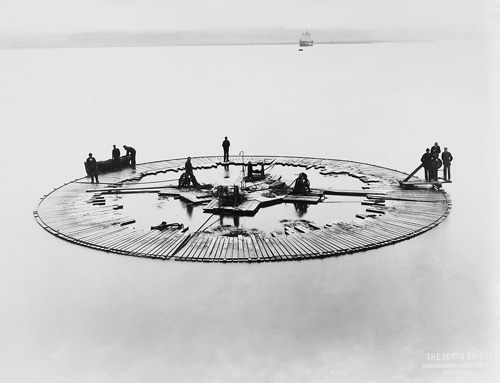
Photograph of Forth Bridge under construction,
National Records of Scotland BR/FOR/4/34/457
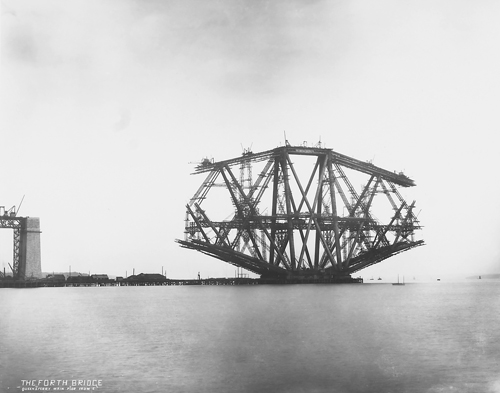
Photograph of Forth Bridge under construction,
National Records of Scotland BR/FOR/4/34/41
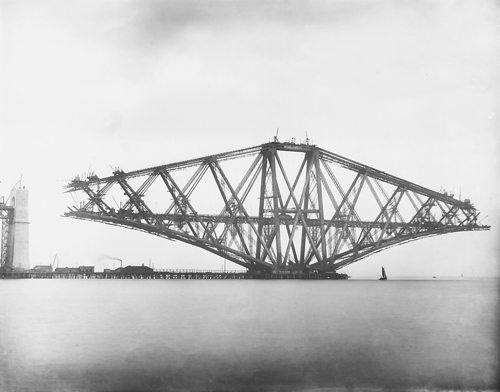
Photograph of Forth Bridge under construction,
National Records of Scotland BR/FOR/4/34/5
The bridge was designed by Sir John Fowler (1817-1898) who had extensive experience of railway engineering throughout the world, and Sir Benjamin Baker (1840-1907), an expert in long span bridges and Fowler's chief assistant. Following the Tay Bridge disaster in 1879, the construction of a railway bridge to cross the Forth was suspended. The previous design by the Tay Bridge engineer, Thomas Bouch (1822-1880), was no longer deemed safe and a commission was tasked with considering alternative schemes. In 1881 Fowler and Baker were appointed to engineer their proposed cantilever design. Work commenced in 1883 on the massive steel structure which would become one of the greatest accomplishments in engineering. Each of the three cantilever towers are over 330ft tall and are embedded in granite piers. At the time, the Forth Bridge possessed the longest cantilever span in the world.
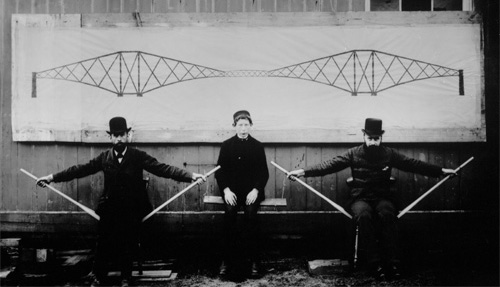
Photograph of Forth Bridge cantilever demonstration,
National Records of Scotland BR/FOR/4/34/161
It has been calculated that 63 lives were lost during construction on the bridge, perhaps a surprisingly small number considering the work involved, the massive heights and the time spent by construction workers below sea level. The huge scale of the structure, the work and the risks involved are well documented in Carey's photographs.
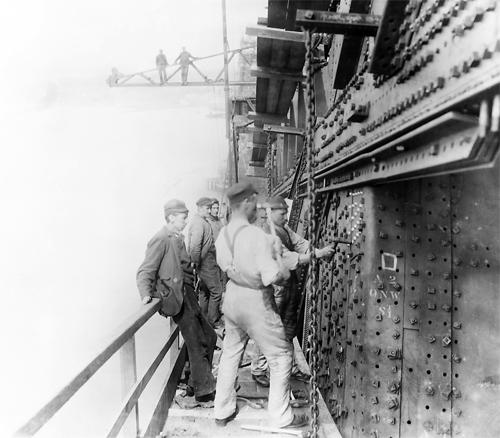
Photograph of Forth Bridge under construction,
National Records of Scotland BR/FOR/4/34/159
The Carey photographs are amongst the tens of thousands of British Railways Board records held by NRS. Other documents relating to the Forth Bridge are two volumes of prints (reference BR/LIB/9/49 and 50) and a small collection of photo albums featuring construction workers and members of the Iron and Steel Institute, 1884-1885 (reference GD1/1346). Parliamentary bills and evidence can also be a useful source of information as they contain very detailed engineering information (several concerning the Forth Rail Bridge can be found in series BR/PYB/S/1). Some technical drawings may also be found amongst the NRS collection of maps and plans. For more details, search the online catalogue.
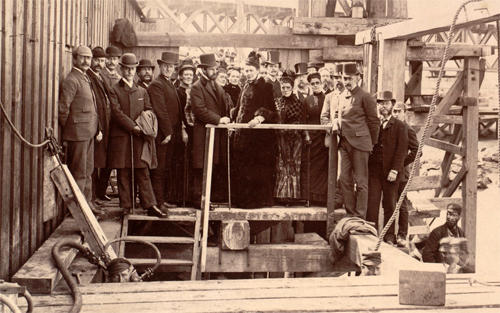
Photograph of visitors to Forth Bridge construction,
National Records of Scotland GD1/1346/2/20
The Evelyn Carey photographic images have been digitally reversed to produce positive images from the original glass plate negatives. The original photographs are too fragile for consultation but surrogate copies may be made available in the Historical Search Room. Select copies are also available from the NRS Image Gallery.